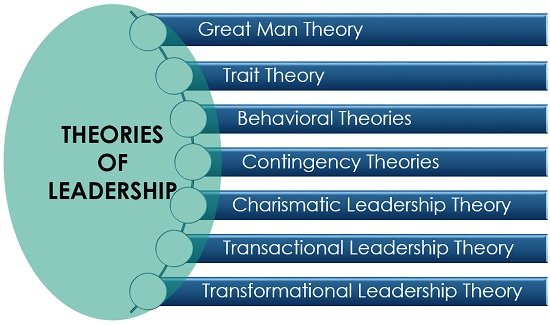Leadership theories are an integral part of academic and corporate research. Business schools around the world use these studies to shape better manager and leaders for the industry. The recent technological developments further contribute to the trend.
HR or human resource is indispensable to any organization. And leadership theories help aspiring entrepreneurs understand the nitty-gritty of employee management. It also helps students ace their HR assignments and get a more realistic view of business operation.
There are nine main leadership theories that I would be focusing on in this blog. Read on to know about the practical application of these theories in your HR projects.

Leadership theories which can be used in any HR assignment
Leadership theories state the different ways in which the company management can organize its workforce. Students aspiring to get into a business can apply these leadership theories to realistic scenarios.
As part of your HR assignment, you might have to take hypothetical scenarios and find solutions to them. Leadership theories also help students crack HR case studies and reports in a holistic way. You can cite market experts, professors, and scholars to enhance the credibility of your argument
There are nine main leadership theories and structures that you learn in your HR management curriculum. I will elaborate upon these theories below.
Great Man theory
The Great Man theory started sometime in the 19th century by philosophers like Thomas Carlyle. The basic premise of this theory is that a good leader is born, not made. These people are born with natural talents and hence different from the average crowd.
However, the main loophole that students use to discredit this theory is that the inherent qualities of a person cannot be measured. There is no standard yardstick to gauge a person’s potential. I would recommend students use this theory to justify the leadership role of an organization.
Also, note that there is no scientific evidence to prove this hypothesis, so you cannot validate the Great Man theory. If gone wrong, this theory can make the leader dogmatic and arrogant in their position.
How to apply top leadership theories in your HR assignment
Trait theory
The Trait theory and Great Man theory are quite similar to baring a few differences. In fact, the trait theory is an extension of the former. As per the trait theory, researchers take Carlyle’s idea and expand upon it.
As per this theory, leadership comes with a standard checklist. Every great leader has familiar trails like intelligence, confidence etc. Here is a comprehensive list of the talents that you can refer to.
- Intelligence and smartness
- Personality: height, physique, and appearance
- Reliability and emotional intelligence
- Assertiveness, confidence and motivated
- Observation skills
- Empathy, foresight, and human relations
- Technical expertise and academic qualifications
- Adaptability and open-mindedness
- Communication skills and public speaking
- Social flexibility
The Trait theory is more credible than the Great Man theory as you have some scientific backing you can refer to.
Behavioural theory
The Behavioural theory was developed sometime in the 1940s by the Ohio State University. Consider this leadership theory as a response to the Great Man theory and Trait theory.
With the Behavioural theory, it states that the inherent traits of a person don’t matter if he/she cannot project it successfully. Good leadership is an acquired trait, and anyone can adapt to it. The team of researchers created a Leadership Behaviour Description Questionnaire (LBDQ).
The purpose of this survey was to assess the behaviour of successful leaders across several industries. You can incorporate behavioural theory to justify the leadership traits of the HR manager. Also, cite the survey for further scientific proof.

Contingency theory
Contingency theory is more technical than practical in the sense that it makes leadership more flexible and open-ended. As per this theory, there is no generic mould for a good leader. The leaders have to adapt to the situation and tweak their management skills
To use this theory, you don’t have to force the leader to fit a checklist. It is appointing the right man for the right job. For your HR assignment, you can execute Fielder’s method to gauge the least-preferred co-worker scale (LPC)
The three central tenets of the contingency theory are:
- Leader-member relationship
- Task structure
- Positional Power
How to apply top leadership theories in your HR assignment
Transactional theory
The transactional theory is the most relevant to the modern-day business scenario. Most corporations follow the carrot-stick model to get things done around the organization. The method basically works by offering incentives to your team.
The term by transactional leadership was first coined in 1947 by Max Weber. Now, the transactional theory comes with four main elements.
- SMART goals (specific, measurable, attainable, realistic, timely) and incentives
- Actionable measures and monitoring
- Passive management and setting performance benchmarks
- Laissez-faire method for providing resources to the workforce.
A loophole in this theory would be, incentives are not sustainable solutions. HR assignments that deal with short-term goals can apply the transactional view.
Transformational theory
The transformational theory focused more on building communication channels between the managers and the workforce. We can consider the transformational theory as the opposite of the transactional theory
Here, the leader leads by examples and not incentives. You can include this in your HR assignment to justify the shift in leadership approach. Proactive solutions, flexible communication and an effective feedback mechanism are some exciting add-ons you can include.
The transformational theory is a very personalized management approach. Here the leader actively involves themselves in the decision-making process. This motivates the team and builds a strong work ethic.
Situational theory
The situational theory, as the name suggests, is about appointing a leader who is malleable and can adapt to the situation. Students often confuse this with the contingency theory though there’s a slight difference between the two. In situational theory, you don’t have a pre-determined skillset for the leader to fulfil
This theory was developed by Paul Hersey and Ken Blanchard. Situational leadership has four primary approaches.
- Telling the team what to do- give instructions.
- Selling the idea to the team- convincing the team about the effectiveness of the plan.
- Participating in the task- active involvement in the everyday operations of the project
- Delegating the right tasks to the right people- employee management and people skills
The situational leadership theory is often used to justify an organizational shift in the company. The team leaders have to take the reins of the situation to ensure effective management.
Leader-member exchange theory
The leader-member exchange theory concentrates on relationship building. It allows the managers and team members to interact in free and open space. This facilitates a better exchange of ideas and better productivity.
The leader-member exchange theory is often used to break the ice between people. It makes the workforce feel inclusive and involved in the decision-making process. You can use the idea to justify a team-building activity or exercise implemented in the company
How to apply top leadership theories in your HR assignment
Power and influence theory
The Power and influence theory works on the hierarchal structure of HR management. Here, the power positions between the employee and the team leader play out a significant role in the decision-making process.
You can apply this leadership theory to justify managerial changes in the company. Introduction of rewards and incentives, exerting authority and coercing employees are some basic leadership tactics under this theory.
Need for leadership theories
Leadership theories shape your understanding of the business world. Every corporate structure, irrespective of its size and sector, needs a structure. You need a proper employee management system to keep your workforce in check
A good leader is not just a good taskmaster, though. They are also intelligent, have the foresight and can empathize with the concerns of the team. These leadership theories discussed above outline how our perception of leadership changes over time
Students can read through the various leadership theories to understand the contemporary scenario better. These theories, when applied to realistic situations, accounts for faster problem-solving and analysis.
Structuring your HR assignment
Business assignments, particularly those related to human resource, include case studies and surveys. These projects present a hypothetical situation or a real-life incident. Based on the given facts, the students have to then analyze the case and come up with an appropriate solution. An HR assignment has three main parts
- the case study,
- the hypothesis
- the analysis
The main case study must have a proper introduction and main body. Set the context of the HR assignment beforehand. The main body is where you present the facts about employee management and your primary hypothesis.
The analysis is where you try to prove or disprove the hypothesis. This is also the section where you can refer to a few leadership theories to solidify your argument. Ensure that you cite your sources well, add proper annotation and footnotes for more credibility.
I would recommend students to use APA or Harvard style referencing because it’s more suited to business-related assignments. You can even consult your peers and professors about formatting your HR assignment.

Quick links and references
Citation and referencing guidelines: APA referencing guide
Citation generator: https://www.citethisforme.com/
Leadership theories guidelines: A literature review on Leadership theories
HR assignment format guidelines: HR Assignment guidelines and sample
How to apply top leadership theories in your HR assignment


 WhatsApp Us
WhatsApp Us